| Lesson 15 | Line editing |
| Objective | Use SQL*Plus line-editing commands. |
SQL Plus Line Editing Commands
SQL*Plus provides a set of line-editing commands to use in editing SQL statements.
While these line-editing commands are crude by today's standards, they do allow you to correct minor mistakes without having to retype the entire SQL statement. There are just a few commands to learn, and they can save you a lot of time.
The SQL Buffer
Whenever you enter and execute a SQL statement, SQL*Plus holds that statement in an area of memory known as the
SQL buffer[1]. As long as the statement remains in the buffer, you can make changes to it, execute it, and make changes again. The line-editing commands all operate on the current statement in the buffer.
The following series of images illustrates their use:
Oracle Line Editing Commands
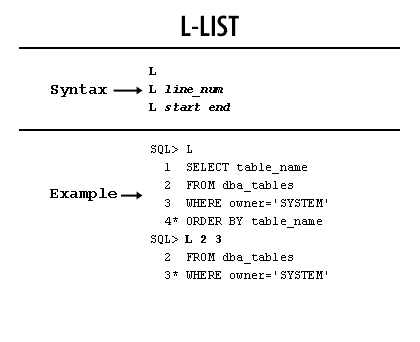
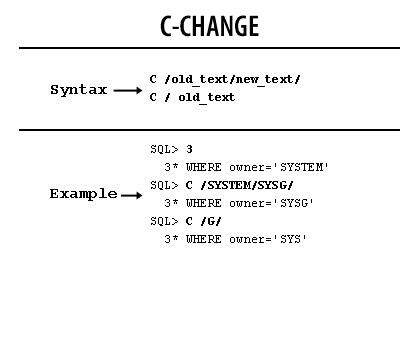
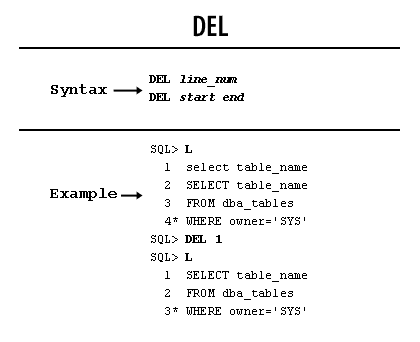
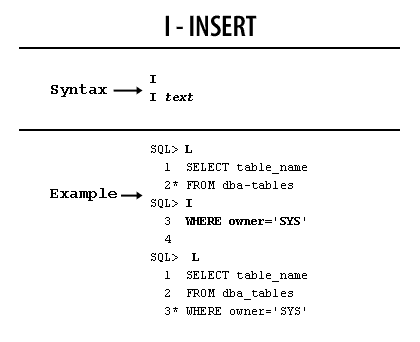
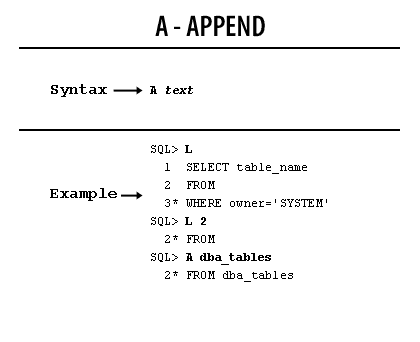
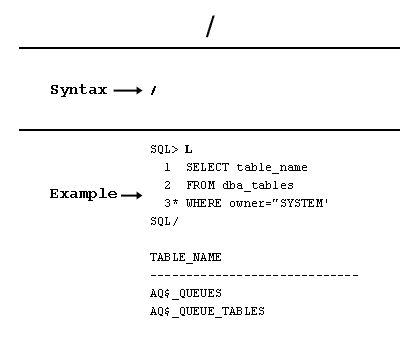
- Use the LIST command, abbreviated to L, to list lines in the buffer.
- The CHANGE, abbreviated to C, command may be used to change test on line, or to delete text.
- Use the DEL command, which may not be abbreviated, to delete one line or a range of lines.
- Use the INSERT command, abbreviated to I, to insert lines into the buffer.
- Use the APPEND command, abbreviated to A, to append text onto the end of a line.
- Use the forward-slash command to execute the SQL statement currently in the buffer.
SQL statements remain in the buffer only until you execute another SQL statement. If you have a 100-line statement in the
buffer and you inadvertently type COMMIT, the 100-line statement will be replaced by the word COMMIT. If you are editing long statements, make sure to copy them to a text file before you begin.
Sql Plus Line Editing - Quiz
Here is a short quiz to test your knowledge of the line-editing commands.
SQL Plus Line Editing - Quiz
SQL Plus Line Editing - Quiz
[1] SQL buffer: A memory area used by SQL*Plus to hold the most recently entered SQL statement or PL/SQL block.